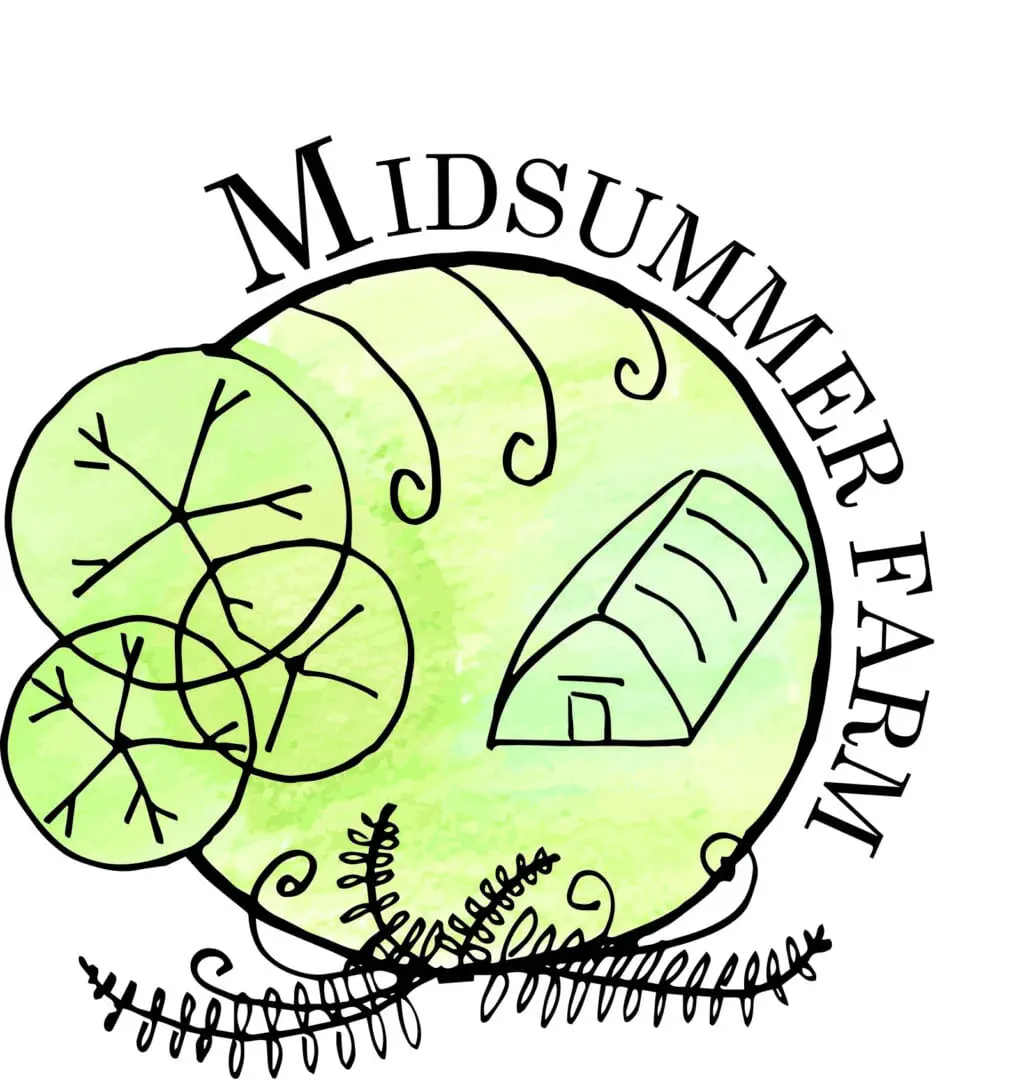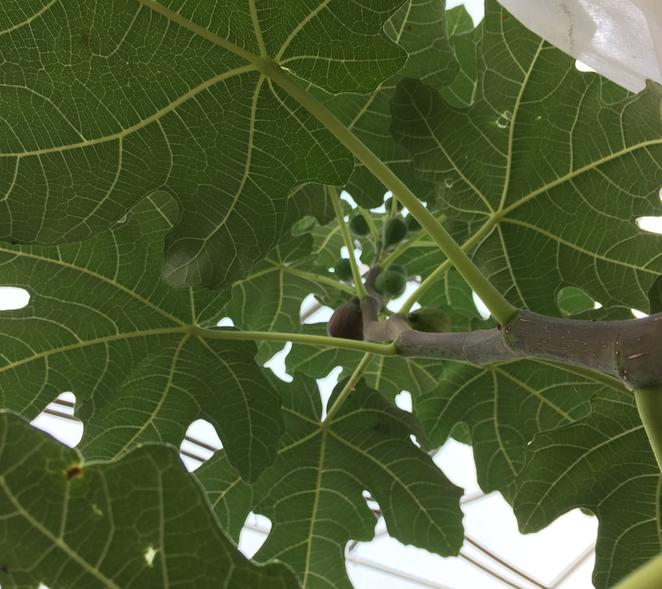
FIGS
We probably get asked more about fig care than any other plant we sell.
We love figs and we love growing them – grown in a ‘cool’ greenhouse, they are very rewarding fruit trees.
The easiest way to grow figs is in a greenhouse. In a greenhouse, they get superheat in summer, lots of warm days in early autumn, and are protected from freezing in winter. Our greenhouse doesn’t dip below 34 degrees F, but most varieties of figs would be fine in any greenhouse even if the temperatures got as low as 20 degrees F or even lower.
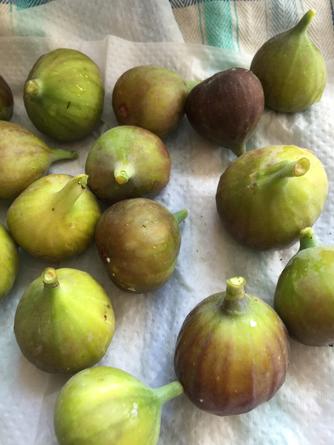
Fig Facts
- Figs don’t mind dramatic pruning – so you can prune to make best use of space in your greenhouse. They can be espalier-style. Branches are flexible and can be trained easily.
- Figs will get big in the greenhouse – plan to use them to create shade in summer and autumn when they are leafed-out. After they drop leaves in winter and early spring, you’ll have sunny space to work with.
- There are hundreds of varieties and types of figs – the type you will most likely be growing in this area is what is called “The Common Fig.” There are hundreds of Common Figs and many different names for each variety as figs are easy to propagate and many breeders start developing their own lines. All the figs we sell are Common Figs. Common Figs do not require any insect pollinators.
Figs Usually Set Fruit in Late Summer or Early Fall. The Main Crop Is Usually in Fall.
Some varieties will produce “Brebas.” What is a Breba? A breba (or breva) is what a fig is called if it develops in the spring.
Figs are usually late summer/autumn crops. But many varieties of fig tree are capable of producing brebas, or early figs. These figs develop on the branches that grew the year before (old wood). So you can get two harvests. The breba harvest is usually smaller than the autumn harvest. The autumn harvest would then be on the branches that grew during the course of the spring and summer.
No Greenhouse? You Can Still Grow Figs!
Figs get trickier when not grown in a greenhouse as they are a warm climate plant – sub-tropical to be precise – usually hardy to 15-20 degrees F. Winters here in Warwick, NY can sometimes kill fig trees that are planted outside. With the slightly more mild winter climate of Bergen and Rockland counties and in NYC and Long Island, people are able to keep figs alive for more years than we could here, outside.
Figs in Pots and Brought Inside for Winter
Before we got the greenhouse, we grew a fig tree in a big pot, that we brought inside the house in the winter. To properly grow figs this way, you have to force a winter dormancy period. You really shouldn’t try to keep it growing and leafed out throughout the winter. Figs are deciduous and need to go through a dormant phase each year to re-start their cycle and produce fruit.
When we had a fig in a pot, we would leave it outside in the fall and let the decreasing daylight hours and cool temps encourage it to drop its leaves and become dormant. Timing varies depending on the year, but this is usually around end of October. We wouldn’t trim the plant at all at this point. If it seems the fig will be too big to get into the house, trim it back in early September. Bring it in and keep it in as cool a place as possible. We put it in the basement where there was a little light but not much is needed, and it stays cool – under 45 degrees. If you put the dormant fig right into your warm kitchen next to a Sunny window, it would think it was spring and start growing. But the growth would not be very strong or healthy. So to keep your tree healthy and get lots of figs, you should try to encourage this dormant stage.
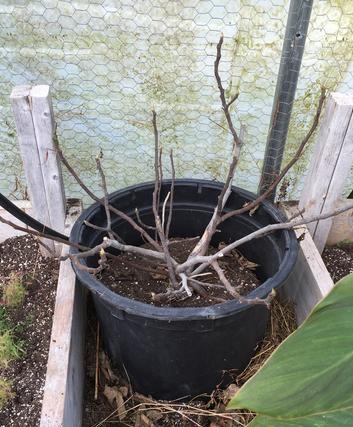
Keep the fig in the dark cool place until the weather warms up – we usually put ours out in April if it was still fully dormant. If it started to get leaves, we would trim them off. Keeping the pot relatively dry is also helpful in keeping dormancy from breaking.
You will have to re-pot your fig – do this in spring as you bring it out. It will need a bigger pot every other year or so.
Pots can get cumbersome – we grew our fig tree right next to our garage so we could drag it inside without having to get it up steps.
Be careful that the roots of the fig don’t grow into the ground under your pot. Keep pot up on a stand or off the ground. The roots will form faster than you think!
Figs also like some snugness- don’t jump to a dramatically larger pot. Step up the size of your pot gradually. If you are not getting as many fruits as you think you should be getting, it could be because your pot is too large…
You Can Plant a Hardy Variety Like Chicago Brown, Olympian, or Violet De Bordeaux Outside in Your Garden.
These varieties can survive temperatures near 5 degrees F for a limited amount of time and usually do OK in zone 6. We know people in Bergen County near the Hudson River who have figs trees that over 30 years old that are grown in the ground next to their house.
These figs trees do well because they are planted on the south side of a brick wall. That gives them protection from cold and extra warmth on sunny days. In the winters of 2013-2015, we had extended periods of single-digit temperatures. The figs trees outside were badly damaged – and the branches had to pruned back to the ground. But the roots were OK, and figs are remarkable able to grow back completely. The amount of fruit produced was less than usual following being pruned so dramatically, but the trees are healthy and fine and will catch up again in a year or two.
So if you do want to plant figs out in your garden
- Choose the hardiest variety you can find.
- Choose a location with some protection and in full sun.
- Consider some extra winter protection – some people wrap their figs in burlap, or bend them down and bury them, or pack straw bales around them.
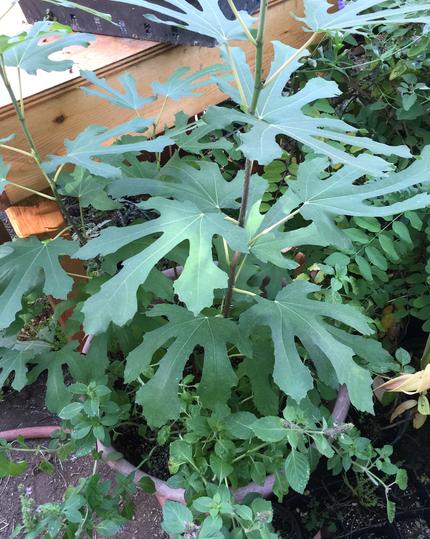
More Fig Facts
- Figs grow as tall as 20 feet. They seem to know where the top of the greenhouse is and stop there for us. Some varieties are shorter in general and tend to grow in a wider style.
- Figs are deciduous – their leaves turn yellow and drop in Autumn.
- Figs are self-fertile for the most part – you only need one. And most varieties and species do not need insect pollination.
- Figs like it HOT – very hot and bright full sun
Pruning Your Fig Trees
Don’t be afraid to prune your figs. Even the roots can be cut back with no ill effects. Roots can be pruned dramatically and grow back fast and vigorously.
Figs can fruit on new wood, old wood, or both depending on variety. You have to know how the variety you have behaves so you can prune accordingly.
When pruning keep airflow and light in mind – don’t let leaves and branches get crowded and packed. Remove middle branches to let light and air into center of the tree. Figs grow very fast, and you can have a very congested tree quite suddenly!
Here’s our big Chicago Brown Fig Tree on West Side of Greenhouse in May (You can see how dramatically we prune it back and how the branches start to grow out):
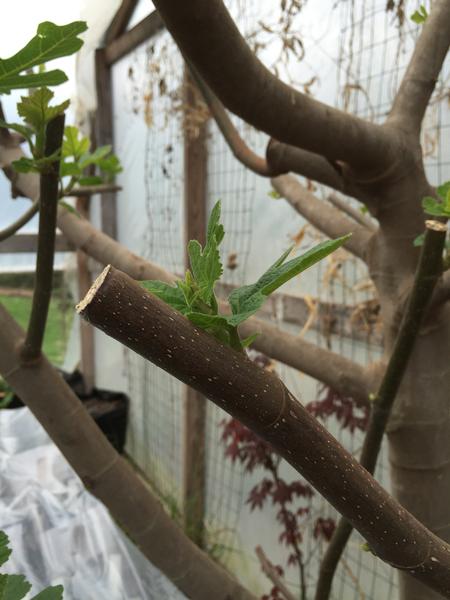
In late June:
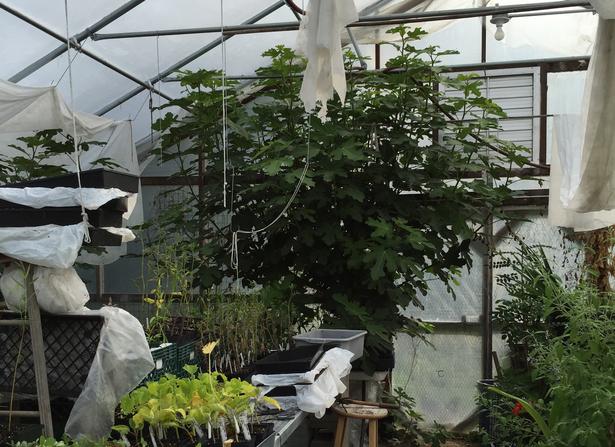
In September:
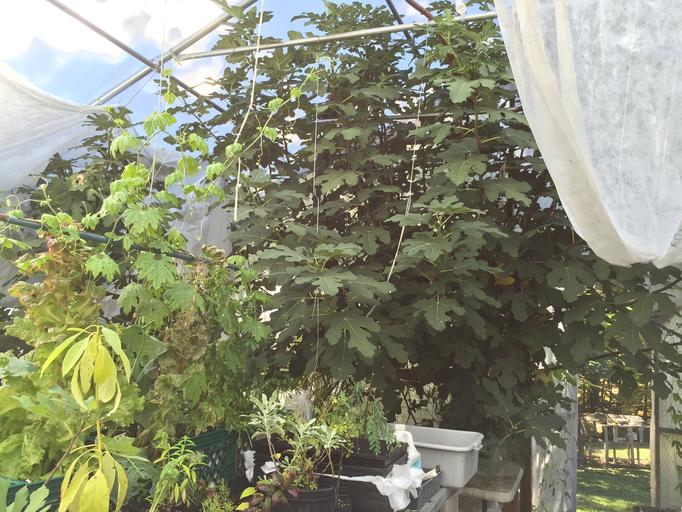
Varieties We Offer
Baby Fig trees are always very popular at our Plant Sales. We grow a bunch of different types of figs and propagate the best and hardiest for our Plant Sales. All of your figs and all of our plants are grown organically.
Our Chicago Brown (This Is the Variety We Have at Our 2020 on-line Plant Sale.)
Sometimes we refer to this fig as our Monster Fig! This fig needs room – it easily reaches the ceiling of our greenhouse which is 15 feet tall, each year after we prune it down to 5 feet high each winter. AS large as it can grow, it also performs well with strong pruning and considering that most of its fruit are borne on the new year’s growth, that is a very good thing!
This Chicago Brown Fig produces a plethora of brown skinned and pink fleshed fruits. Sometimes it does brebas. Like most figs, it needs very hot temperatures to ripen the figs, but it is a pretty early fig compared to others. If the summer is cool (if your summer is under 90 degrees and short, you’ll have tons of hard green figs that don’t ripen and fall off once the cool temperatures and shorter daylight hours sends it into dormancy…) In cooler summers we turn off the ventilation fans in the greenhouse to raise the temperature in September to get them a chance to ripen.
‘Olympian’ Fig
Olympians are hardy to zone 6, and very hardy and reliable producer. They produce a very large and dark brown fruit – could be considered purple. Bright red on the inside. Super-Sweet, thin skins, and great figgy flavor. Despite how big the fruits get, the plant itself is compact, reaching about 10 feet in height. Olympians are heirlooms and were just rediscovered in 2014. Needs full sun (or partial sun is Ok too). Needs moist and well-drained soil. Great for containers and espalier.
‘Violet De Bordeaux’ Fig
‘Violet De Bordeaux’ Fig is the darkest fig we grow. Figs are small but exquisitely flavored. Dark black-purple skin and very bright red insides. This is also one of the hardest of all figs. It was found in 1680 in the Versailles gardens thriving during the cold winter months. The ‘Violet De Bordeaux’ Fig is a fabulous heirloom and remains relatively short. Great for containers and espalier. Needs full sun (or partial sun is Ok too). Needs moist and well-drained soil. Tends to produce a breba crop or second crop in Spring as well as the regular Late Summer/Early fall crop. Hardy to Zone 6!
Green Ischia Fig (Ficus carica ‘Ischia’)
This is a relatively short fig – staying under 8 feet in height. It is hardy to zone 7, and its compact growing habit makes it easy to move around. Ischia Figs are greenish-yellow skinned with a pink flesh. They look very dramatic sliced on a plate. If you have been having issues with birds eating your figs, switching to a light-skinned variety will probably throw them off! Needs full sun (or partial sun is Ok too). Needs moist and well-drained soil. Great for containers and espalier.
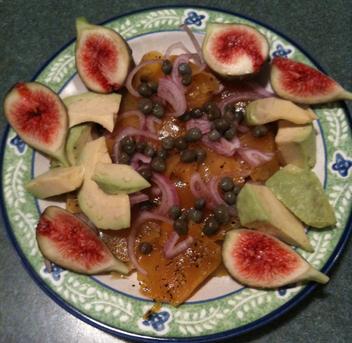
In 2020, we will be selling our fig trees in 4-inch pots for $6.00 each.
Figs grow fast, so we recommend transplanting into a bigger pot ASAP.
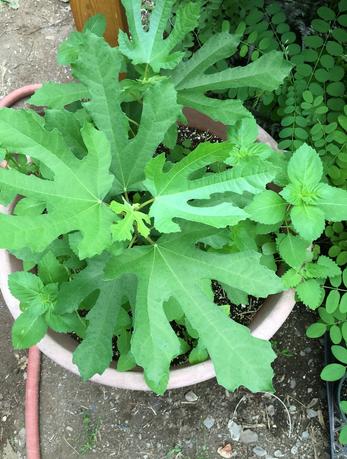
Typical growth spurt – A month after transplanting…
Some Holy Basil seeds got in there with the fig!
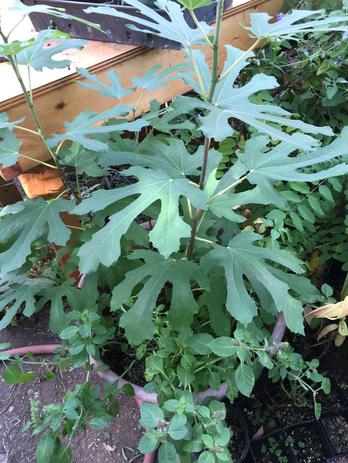
By September, the fig tree is large enough to support fruit production next year … This is a Violet de Bordeaux.
Leaves will turn yellow and drop off as days get shorter and cooler.
I am planning to prune this one and train to a espalier…
The Holy Basil sharing the pot is still flowering under the fig!
Harvesting Figs
Figs will not ripen more once they are removed from the tree. So only pick the ripest figs and eat them right away. Figs don’t store well either. We usually keep whatever we harvest on the kitchen counter and eat them throughout the day. Any you want to store more than two days can go in the fridge and will hopefully last another day or two.
You’ll get a feel for when they are ripe but in general, figs are ripe when they feel soft and plumped up. They should pop right off the stem with almost no pressure. Many varieties are ripe when a tear of dew forms on their eye, or the opening at the bottom of the fruit.
That opening is actually where the fig is pollinated. The flower, or rather flowers, are inside the fruit… figs aren’t truly fruits – they are inflorescences or clusters of many flowers and seeds contained inside a bulbous stem.
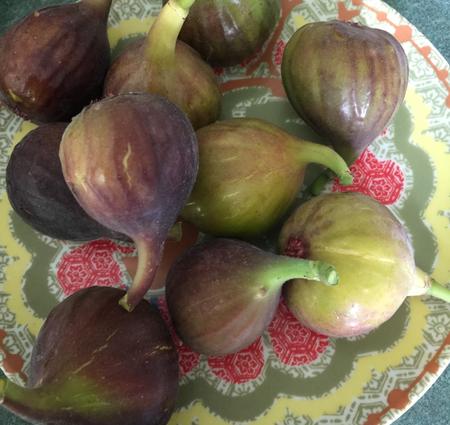
More Great Info Can Be Found on These Sites:
http://www.leereich.com/2014/11/figs-up-north.html
http://www.treesofjoy.com/fig-varieties-collection
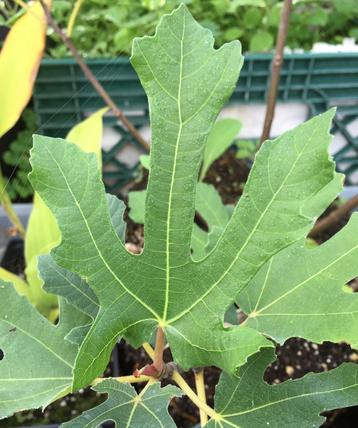
Figs and Wasps
Certain types of figs need a particular species of wasp to pollinate them. When you eat the ripe fig of these types of species, you may be eating a dead wasp as well. However around here those would NOT be the type of fig you would be growing because it would never make a fig because it would never be pollinated, because those wasps can’t live in this climate. So, around here you would be growing what is called a Common Fig which is self-fertile, with fruit that develops parthenocarpically and doesn’t need insect pollination.
So even though a million sites may come upon a search of the internet all saying that you’re eating a dead wasp if you eat a fig, it simply isn’t true about the figs you will grown around here!!! OMG – the bad info that is put out there!
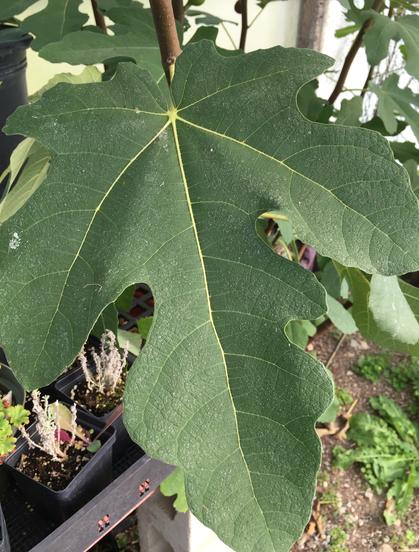
Fig Problems? Really None!
They like nice neutral soil, sun, well-drained location with even watering. Leaves will droop a bit if the tree is too dry, but perks right up once watered. No real bug issues. Bugs, birds, and rodents do like the figs though. So you may have to put up some sticky traps for ants and fruit flies and net the tree against birds. Rodents are harder to deal with – we had chipmunks gobbling up all our figs one year but the problem was solved when we adopted two more cats who enjoyed hanging out under the figs trees!
Check out our other gardening and holistic articles and blogs here

